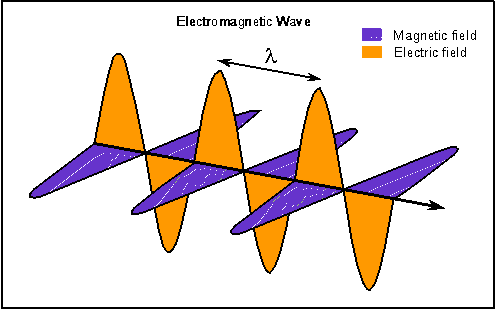-
Asked by to Mark, Matthew, Mike, Paul, Sabina on 12 Mar 2014. This question was also asked by .0
Question: If light travelled in waves as oppose to straight lines, would we still be able to see?
- Keywords:
-
Mike Lee answered on 12 Mar 2014:
You’re right, light is a wave!
Imagine a fly on the surface of a pond on a calm day – there are no ripples in the pond. Then drop a pebble near the fly, making ripples. These ripples travel across the pond to the fly, and the fly would bob up and down. The fly would think, feeling himself go up and down, “Hmm, someone has thrown a pebble in the pond!”.
This is really how light works – the reason we say it moves in straight lines is because every part of the ripple moves directly straight away from where the pebble was dropped.
-
Paul Coxon answered on 12 Mar 2014:
This is quite a good question, the fundamental nature of light has puzzled philosophers and scientists for centuries.
Imagine a single source of light, like a lightbulb. The light emanates from the bulb as a wave surrounding the bulb in all directions. We say that light moves in straight lines because it helps us understand the movement of the wave.
As Mike says, the motion of the wave can be thought of as a pebble in a calm pond. Dropping the pebble sets up a series of ripples that over the surface of the water, spreading away in a circular pattern from where the pebble was dropped.
If you watch a spot on a ripple, you’ll see it starts at the centre, moving away in a straight line as the ripple spreads out. This is how light moves. It’s a wave, but tracking the path of the wave shows it travels in a straight line.
-
Matthew Malek answered on 12 Mar 2014:
This is a very tricky question… and it helps illustrate the elusive nature of light.
You see, light does travel in waves… but those waves move in straight lines. Sound confusing? Read on:
Light is an electromagnetic wave. That means that it has both an electric component and a magnetic component. If a ray of light is travelling out of your screen towards you, the electric component can be considered as going up and down, whilst the magnetic field component is going side to side. (Or vice versa, it doesn’t matter which)
It may help to look at this animated gif, which illustrates what I am saying:

Now light does display wave properties under certain circumstances. For instance, it has a wavelength and a frequency. Under other circumstances, it acts like a particle. In fact, Newton took the same reasoning as you — light travels in a straight line — to argue that light was a particle. Other evidence includes Einstein’s “photoelectric effect”, where a single photon (particle of light) hits a surface and knocks off a single electron.
This “wave-particle duality” created a lot of discussion for centuries. We now know that light is actually something that is neither a wave nor a particle… but has properties of each. Even more, it isn’t just light that behaves this way! Matter that we used to think of as particles, like electrons, are the same — they exhibit particle-like properties under certain conditions and wave-like properties under others.
So, yes, light travels in waves. And, yes, light travels in straight lines. And also, yes, we are still able to see. (It would be very difficult to type this if I could not!)
-
Mark Jackson answered on 14 Mar 2014:
The amazing thing is, it does travel in waves! And the story of how we realized it is hilarious. And as usual, this means it involves the French.
In the early 1800’s scientists were trying to figure out what light was. The French Academy decided the best way to solve the problem was to bring all the eggheads together for a meeting for them to hash it out. A young engineer named Augustin Fresnel suggested that light was emitted in waves perpendicular to the direction they were moving in. This contradicted the theory of another French scientist, Siméon Poisson, who thought light was actually particles. To prove Fresnel wrong, Poisson pointed out an obvious flaw in the theory: if light were waves, you could hold up something (like a penny) to a source of light (like the sun) and some waves would manage to sneak behind the object/penny and produce a bright ‘dot’, where of course we knew there was no light! This seemed like a pretty waterlight proof that light was not a wave, until someone named Arago actually did the experiment. Guess what he found? THERE IS A DOT BEHIND THE PENNY! Poisson suggested the perfect experiment to prove himself wrong. And ironically, this is now known as a Poisson Dot.

Comments